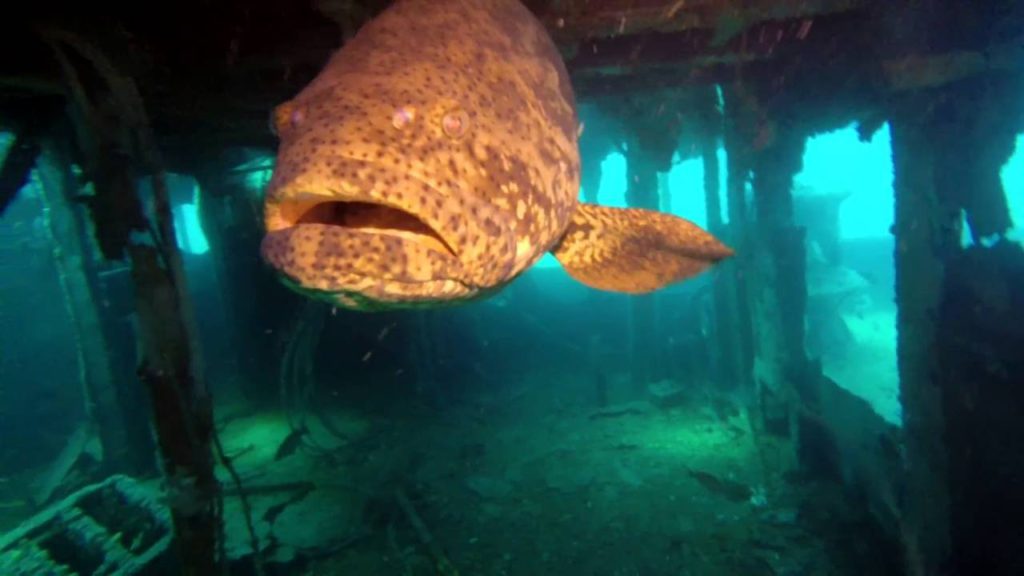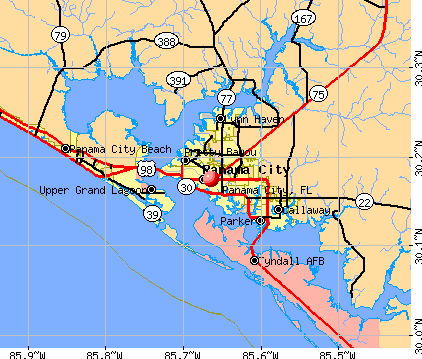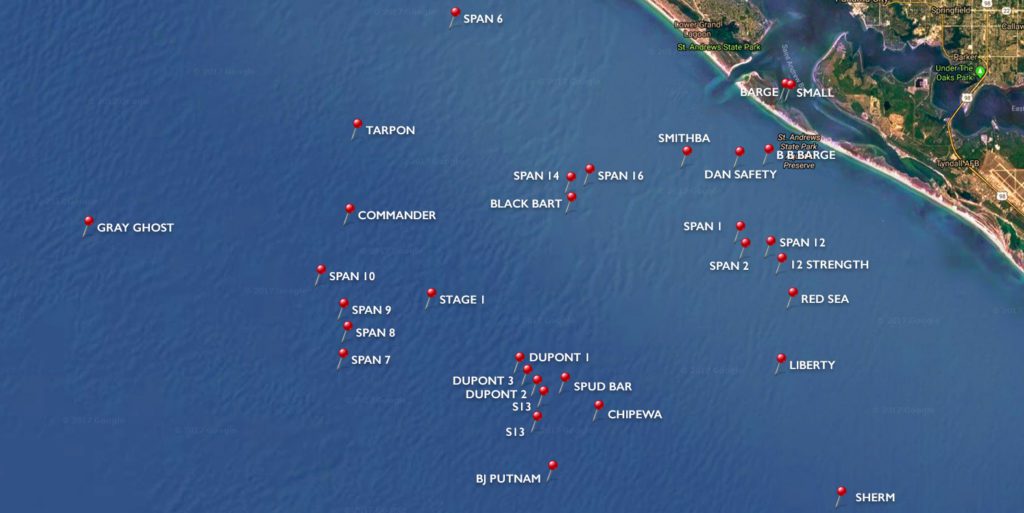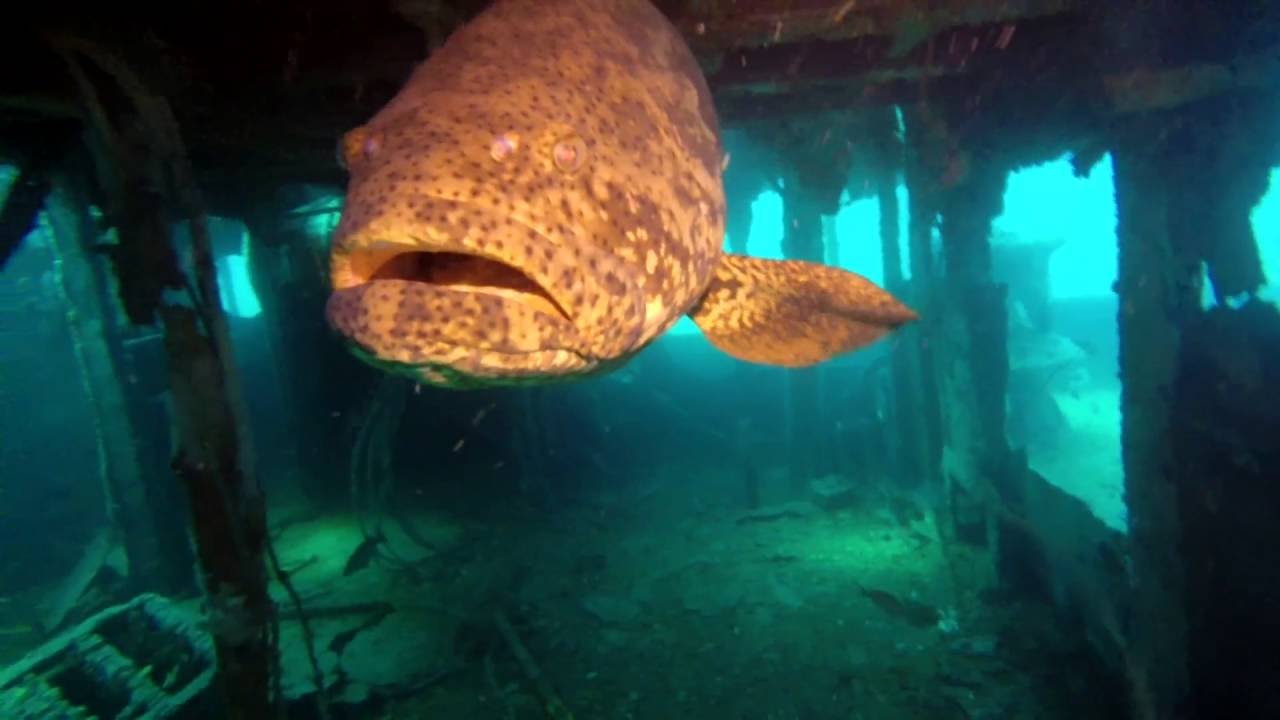
Updated August 5, 2022
This is the thirtieth in a series of reviews of the best dive resort locations around the world. In this post, the focus is Panama City, Florida.
In addition to this series on dive resort locations, the best worldwide liveaboard dive locations and services are reviewed in their own series. To check them out, or others in this series, click on Liveaboards / Resorts on the menu at the top and choose a title from the list.
Have you ever been diving in Panama City before? If so, I’d love to know about your experience. What dive shop or liveaboard did you use? Which dive spots are the best and what are the conditions there regarding the visibility, current, water temperature, sealife attractions, etc.? Please post your response in the comments section at the bottom and we’ll all learn something we can use.
Panama City Florida Scuba Diving
Background
Panama City is set inside St. Andrews Bay in the middle of the Florida panhandle, just across the bay from the famous Spring break party site, Panama City Beach, with its sugar-white sand. They have a combined year-round population of around 50,000, with 185,000 in the entirety of Bay County. There are two military bases and shipbuilding is the major manufacturing industry, with hundreds of thousands of tourists annually playing a major economic role.
Undersea World
Like Pensacola on the northwest of the panhandle, Panama City has dozens of shipwrecks and hundreds of artificial reefs nearby.
Bay County and area sportsmen have created a habitat for a near-miraculous amount of sea life. At times the schooling bait and game fish are so thick that visibility is affected.
There is rich encrusting life of hard and soft corals, hydroids, gorgonians, sponges, and tunicates with tropicals like butterflyfish, angelfish, and damselfish. The many nooks and crannies give excellent cover to macro critters like octopus, crabs, lobster, and mollusks.
Big resident groupers are a major attraction in addition to barracuda, blackfin tuna, several species of turtle, nurse sharks, wahoo, mahi-mahi, pompano, amberjacks, eagle rays, large pods of dolphins, and the occasional manta or whale shark.
The county has supplemented naturally occurring wrecks with dozens they have scuttled along with bridges, and all manner of other materials to create reefs.
There are shallow opportunities for beginners and others at greater depth with penetration possibilities suitable for advanced and technical divers.
Here is a fairly exhaustive list, put together by the Bay County government, with locations of the hundreds of various dive sites, including wrecks, bridge rubble, construction equipment, reef balls, pyramids, limestone modules, culverts, and others:
Seasons and Conditions
Panama City is warm year-round with average highs from June to August of 100°F (38°C) and 82°F (28°C) in February. Correspondingly, water temps run from 82-86°F (28-30°C) in July and 61-68°F (16-20°C) in February.
It rains every month with July-August getting 13 days/month and April-May 5 days/month. Hurricane Eloise caused significant damage to Bay County in 1975 and Mexico Beach, 25 miles (40 km) down the beach, got wiped out last October by Hurricane Michael. I guess the law of averages would indicate it will be a while before there is another major hurricane in Bay County.
A 5 mm wetsuit and hood would be the choice of many in winter and 3 mm or less for summer insulation.
Visibility is variable based on location, weather, and season, but generally, inshore sites have 25-50 feet (9-15 meters) of visibility, and sites farther out, from 50-100 feet (15-30 meters).
For my review of relatively nearby Pensacola diving, please check out this popular article:



Selected Panama City Dive Sites
Simpson Tug: 18 feet (6 meters), 93-foot (28-meter) tug built in 1879, capsized when pulling a fishing boat free in 1929, at East Pass, scattered with the boiler, bulkhead, and smokestack, which breaks the surface at low tide, turtles, stingrays, baitfish, squid, stone crabs, best at low tide, all levels
Black Bart: 80 feet (24 meters), christened Vulcano del Gulfo, 185-foot (55-meter) oil rig supply vessel, sunk for reefing in 1993, holds at 80 feet (24 meters), deck at 60 feet (18 meters), superstructure at 40 feet (12 meters), wheelhouse, galley and head penetrable, galley appliances there, goliath grouper, beginner to experienced
USS Chippewa: 100 feet (30 meters), 205-foot (60-meter) navy tug launched in 1942, sunk in 1990 as a training platform, sitting upright, lots of structure in place, experienced level
USS Strength: 80 feet (24 meters), 185-foot (54-meter) admiral class minesweeper, damaged by kamikaze and midget sub in WWII, sunk and resunk for training, finally sunk for reefing in 1987, rested on its side until hurricane righted her in 1995, hull in two pieces, deck at 60 feet (18 meters), schools of fish, goliath grouper, all levels
Red Sea: 75 feet (22 meters), 130-foot (32-meter) tug sunk for a reef in 2009, the newest such ship used for an artificial reef in the area, beginner and experienced level
USS Accokeek: 100 feet (30 meters), 143-foot (42-meter) fleet tug, built in 1944, sunk, refloated and sunk again, in salvage and ordnance training, reefed in 2000, experienced level
FAMI (Twin) Tugs: 100 feet (30 meters), 11 miles from St. Andrews Bay Pass, 85 and 95 foot (25 and 28 meter) tugs, reefed in 2003 nose to nose, a storm moved one on top of the other, large eagle rays, goliath groupers, experienced level
SS Tarpon: 95 feet (28 meters), 130-foot (32-meter) steamer built in 1887, sunk in 1937, considered an archaeological preserve with no touch regulations, some original bottles still there, experienced level
Hathaway Bridge Spans: built in 1929, 14 spans sunk for reefs in 1985 in different areas and depths
Dupont Bridge Spans: Panama City to Tyndall AFB bridge built in 1927 and 1929, 3 spans sunk in 2008, each span is 180 feet (54 meters) long and 35 feet (10 meters) high
Grey Ghost: 110 feet (33 meters), 105-foot (31-meter) tug, 22 miles (35 km) offshore, sunk in reef program in 1978 next to a natural reef, very rich combo reef today, experienced level
Empire Mica: 115 feet (34 meters), 479-foot (144-meter) British tanker built in 1941, torpedoed by a u-boat in 1942, 20 miles (32 km) south of Panama City, past Cape San Blas and Port St. Joe, used for torpedo practice later creating large debris field, part of bow section rises up 60 feet (18 meters) above the bottom, 2 boilers, propeller shaft, and rudder still there, amberjacks, grouper, barracuda, rays, sharks, experienced level
Panama City Florida Transportation, Diving, and Accommodations
Getting There
Bay County has the Northwest Florida Beaches International Airport served by Southwest, Delta, United, and American Airlines.
Diving
There are at least a dozen shops operating in the Panama City area that can provide instruction, guiding, charters, and rentals.
Housing
A full range of hotels is available in the various cities of the metropolitan area and on the beach starting at around $80 per night. This website can introduce you to many dozens of them and arrange a booking:
Panama City Beach Activities (aside from scuba diving)
The beach, beachside activities, restaurants, and nightlife are of course the main draw. In addition, there are a great many tourist attractions around Panama City including fishing, airboat tours of inland waterways, ocean boat tours, some to find dolphins, a pirate cruise, Gulf World Aquarium, Zoo World (zoo and botanical garden), Man in the Sea Museum, Coconut Creek amusement park, Conservation Park, St. Andrews State Park, several water parks, various other parks, and beach tours.
Panama City Beach Photos
With the wrecks and hundreds of dive sites, macro life, beautiful, diverse reef life, lots of fish, and scenic shore-side environment, there are many excellent photo opportunities. For information and reviews of diving cameras, click here:
Scuba Diving Trip Insurance
A cushion for emergencies provides peace of mind when on vacation. I recommend this diving insurance as they have worldwide coverage and provide scuba divers quality insurance and medical assistance service.
Feedback and Comments
I hope you found this post on Panama City scuba diving interesting and useful. If you have any questions or ideas, please feel free to share them in the comments section. I’d love to know of any experience you have diving there. If there is no comments section directly below, click here: >>comments<<

Hi Joe. What a great article. I really enjoyed the reading! My son has done a diving course and he got his two stars. Now he wants to venture out and discover the undersea world:). We have decided for the whole family to do a diving course, too, so we can travel with him and enjoy some diving. We thought we would go to the BVI wrecks, but after reading this article, I have changed my mind. There is so much to see in the Panama City area. I don’t want to miss this trip. The Simpson Tug, Black Bart and the Red Sea really interest me. Do you think it’s possible to do a diving trip to see all the wrecks? If so, how long would it take to see all of them? Thank you!
Hi Daniella,
Thanks for your kind comments. It’s great you would like for the whole family to take up diving.
It will take you 3-5 days to accomplish the open water diver class. Any of the dive shops there can do it with you. Some of the wrecks are for advanced level divers, so you wouldn’t be eligible for them until you get some experience. There are many dozens of sites suitable for beginners, though, enough that it would take months of diving every day to do them all. I think you can find many suitable sites on your trip to satisfy you for the time being. Please let me know how it goes. Best of luck.
If you have any questions, let me know.
Best regards,
Joe
I started scuba diving 15 years ago, but it has been a few years since the last time. This post on the wrecks around Panama City has really piqued my interest to go again. Looking over the descriptions and watching the videos, I really want to go down there among that ridiculously large number of schooling fish and check them out.
Thanks a lot for all the information, videos and maps. It’s hard to wait for my vacation in May.
Hi Seun,
It makes me happy to see you want to take up diving again after a few years off. Thanks for your kind comments. If you have any question or concerns, please let me know.
Best regards,
Joe
There are things I must do in my lifetime and one of them is scuba diving.
I would go for the Simpson Tug dive site just because it has a shallower end for anyone new to the sport. The June to August period seems to be the best time for one.
I am fascinated by the deepwater creatures on Television, and I would want to see them live someday.
Possibly you can advise me whether there are diving guides or diving schools around Panama City.
Thanks for your interest, Ahimbe. Sure there are plenty of dive guides and diving schools in Panama City. As I said in my article there are more than a dozen schools. They are easy to find. With no previous experience, you should plan on 3-5 days for the open water diver class. If you want me to recommend a particular dive shop, send me a note through the contact form.
Good luck.
Joe
There are things I must do in my life time; and one of them is scuba diving.
I would go for the Simpson Tug dive site just because it has a shallower end for anyone new to the sport. The June to August period seems to be the best time for one.
I am fascinated by the deep water creatures on television, and I would want to see them live someday.
Possibly you can advise me whether there are diving guides or diving schools around Panama City.
Hi Edgar,
I am happy to hear you would like to get started. Panama City is a good place to learn. Any of the dive shops there can do the open water diver course with you. You’ll need 3-5 days to accomplish that. There is some reading, 5 classroom sessions to learn about theory and safety, 5 lessons in a pool to learn and practice diving skills and 4 open water dives in the ocean to practice the skills and firm them up. After that, you’ll be able to dive on some of the wrecks. It’ll be great fun. Good luck and please let me know how it goes.
If you have any questions, please get in touch.
Best regards,
Joe